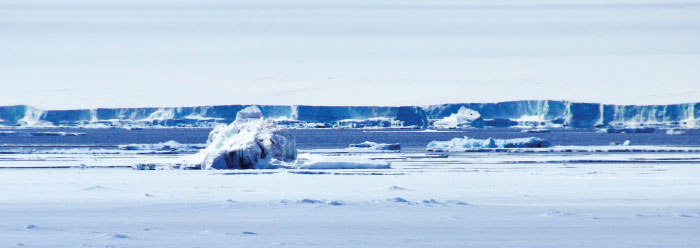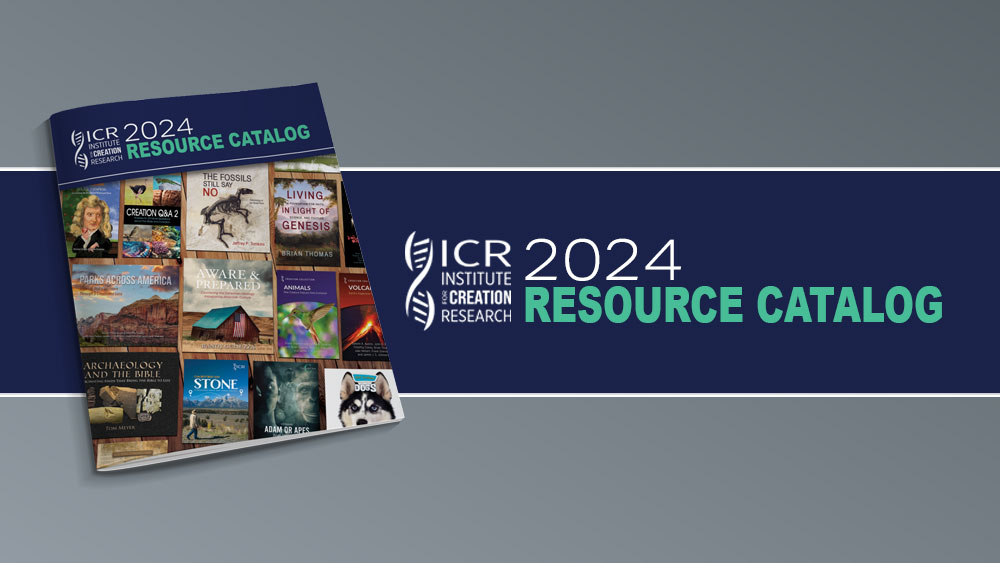Secular scientists claim that ice in deep cores extracted from the thick Greenland and Antarctic ice sheets is hundreds of thousands of years old. Do these ice cores prove an old earth?
Although these scientists believe the ice sheets to be millions of years old, vast amounts of time are not necessarily required for their formation. “Back of the envelope” calculations show that if current average snowfall rates have always been the norm, then the Greenland ice sheet could form in about 5,000 years and the Antarctic ice sheets in a little more than 10,000 years, ignoring factors such as melting.1 Of course, melting would increase the ice sheet formation time, but higher snowfall rates would decrease the time. Therefore, the 4,500 years since the Flood provide ample time for the growth of the thick ice sheets we see today, considering the much greater snowfall during the post-Flood Ice Age.1
Theoretical ice-flow models are the most common means of dating ice cores—especially the deep Antarctic cores. These models implicitly assume the ice sheets have existed for millions of years, so the vast ages the models assign to these cores are hardly surprising.1
However, some skeptics, while acknowledging the possible influence of old-earth assumptions on Antarctic core dating, claim that the deep cores from central Greenland provide irrefutable evidence for an old earth. For instance, the 3,000-meter GISP2 core was dated by counting presumed annual layers, a process supposedly independent of any old-earth assumptions.
However, the difficulty of correctly identifying annual layers negates this argument. The top half of the GISP2 ice core was dated by counting layering patterns called depth hoar complexes. Dozens of distinct layers can be deposited within just a few years, with the number of layers varying from year to year.2 Since the number of layers changes from year to year, glaciologists must guess how many layers were actually deposited in a given year—a task that is increasingly difficult at greater core depths. In spite of these uncertainties, secular scientists assigned the remarkably low age of just 9,300 years to the ice at a depth of 1,500 meters in the GISP2 core.3
The bottom half of the GISP2 ice core was dated by counting presumed seasonal dust “peaks” within the ice. (Atmospheric dust content is generally higher in the spring and summer.) However, dust levels are always changing due to ever-varying meteorological conditions, and secular glaciologists have acknowledged that storms, particularly violent ones, could result in higher dust levels within the ice cores.4 Therefore, the many winter storms in Greenland during the post-Flood Ice Age could have resulted in thousands of non-annual dust peaks. In fact, dust concentrations in the bottom sections of the Greenland ice cores are highly variable, ranging from three to one hundred times (!) the concentrations found in the upper core sections.3,5
Scientists need at least four or five measurements to identify a dust peak, but how far apart should those measurements be made?3 Because secular ice-flow models predict very thin annual layers deep within the ice cores, secular scientists believe these measurements should be spaced very closely together. This makes it much more likely that they will mistake a short-term “jump” in dust content for a seasonal change. Therefore, the 100,000 dust peaks counted by secular scientists in the bottom half of the core likely resulted from a “perfect storm” of highly variable dust content and old-earth assumptions.3
When one understands the details behind the secular dating of these ice cores, this apparent challenge to the Bible’s short timescale simply melts away.
References
- Hebert, J. 2014. Ice Cores, Seafloor Sediments, and the Age of the Earth, Part 1. Acts & Facts. 43 (6): 12-14.
- Alley, R. B. 1988. Concerning the Deposition and Diagenesis of Strata in Polar Firn. Journal of Glaciology. 34 (118): 283-290.
- Hebert, J. 2014. Ice Cores, Seafloor Sediments, and the Age of the Earth, Part 2. Acts & Facts. 43 (7): 12-14.
- Jacka, T. H. Antarctic Ice Cores and Environmental Change. Antarctic Cooperative Research Centre and Australian Antarctic Division. Posted on chem.hope.edu, accessed March 31, 2015.
- Ruth, U. et al. 2003. Continuous record of microparticle concentration and size distribution in the central Greenland NGRIP ice core during the last glacial period. Journal of Geophysical Research. 108 (D3): 4098.
* Dr. Hebert is Research Associate at the Institute for Creation Research and received his Ph.D. in physics from the University of Texas at Dallas.














